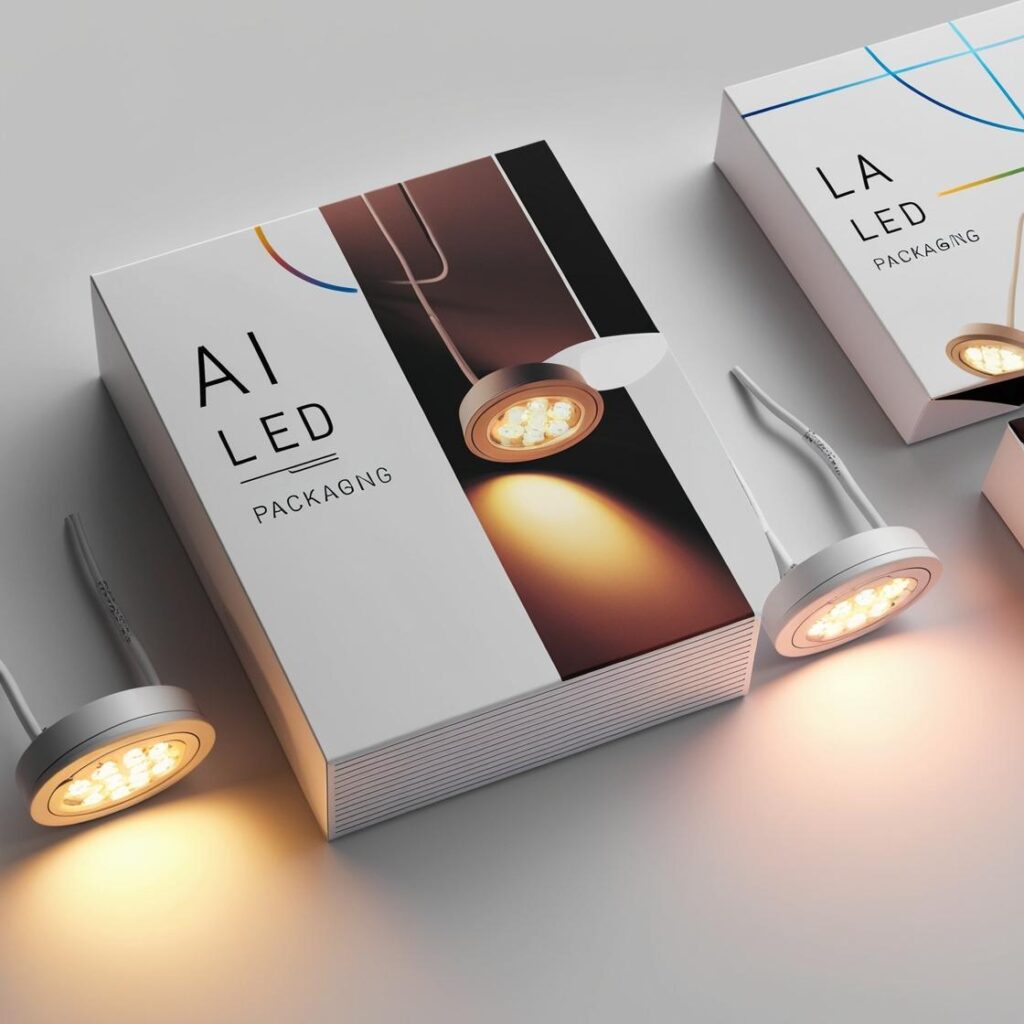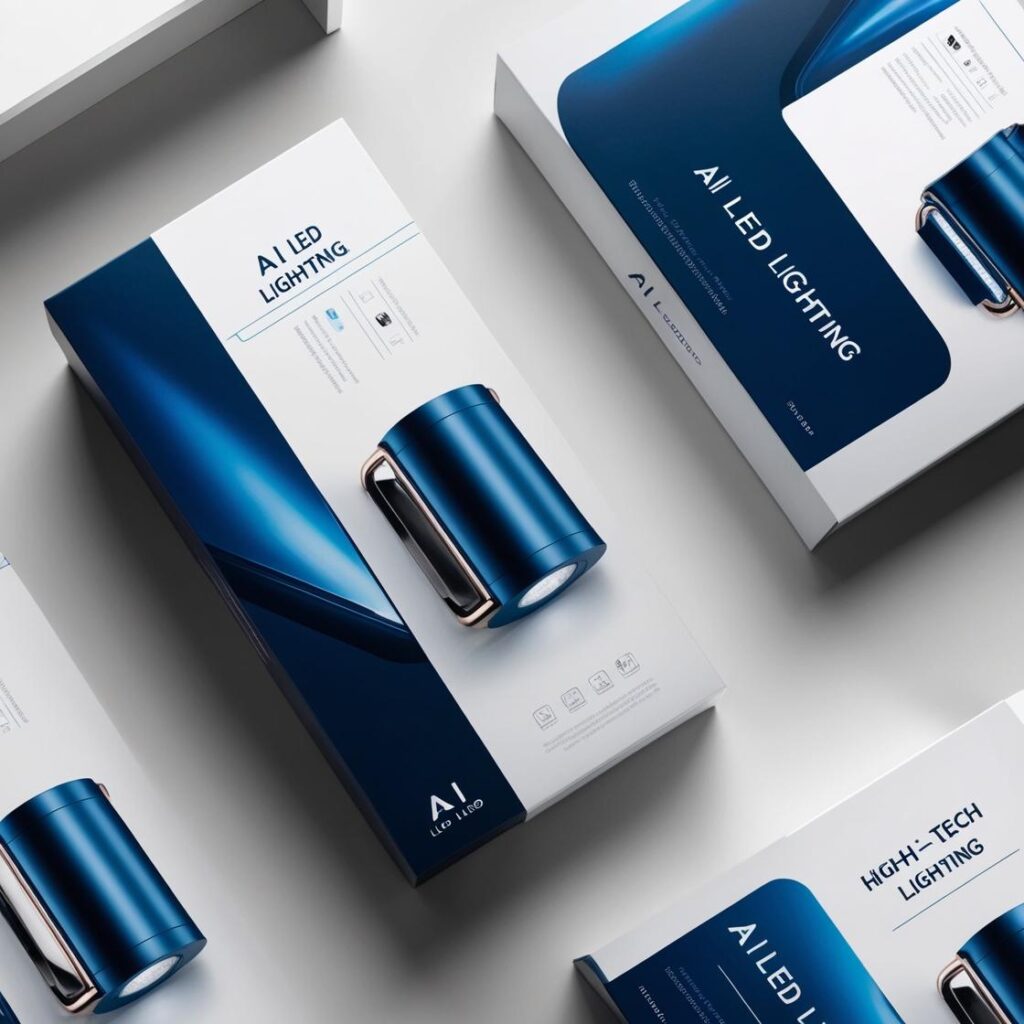Overview of AI LED Packaging
The AI-driven LED packaging market is rapidly evolving with advancements in technology aimed at enhancing the efficiency, performance, and lifespan of LED lights. Artificial Intelligence (AI) is revolutionizing several industries, and the AI LED Packaging market is no exception. AI integration in LED packaging systems improves various stages of the manufacturing process, including testing, monitoring, quality control, and predictive maintenance.

LED packaging involves placing the LED chips onto a substrate, followed by protective materials to ensure durability. With the increasing demand for energy-efficient lighting solutions, AI-driven advancements in LED packaging are leading to the development of smarter and more sustainable lighting systems for diverse applications, including consumer electronics, automotive lighting, commercial lighting, and architectural lighting.
As AI plays a pivotal role in optimizing various aspects of the LED industry, it enhances the production process and the functionality of the final product, improving energy efficiency, light output, and color consistency, making it more adaptable to emerging industry trends. These innovations are expected to drive the market growth for AI LED packaging technologies in the coming years.
Attractive Opportunities
- Integration of AI with Smart Lighting Systems:
The proliferation of smart homes and smart cities is creating a large market for smart lighting solutions. AI LED packaging plays a crucial role in these systems by enhancing energy efficiency, automating light intensity, and controlling color temperature based on real-time data. - Growth in Automotive Lighting:
As the automotive industry continues to shift toward electric vehicles (EVs) and autonomous vehicles (AVs), the demand for advanced lighting systems with integrated AI technology is increasing. AI LED packaging enables adaptive lighting in vehicles, which enhances visibility, safety, and aesthetic appeal. - Miniaturization and Flexibility of LED Devices:
The trend toward miniaturization and flexible LED lights in consumer electronics is opening new opportunities for AI in LED packaging. AI-driven technologies are being employed to ensure that LED chips remain energy-efficient while being incorporated into smaller, flexible substrates for use in innovative applications such as wearable devices. - Energy-Efficient and Sustainable Solutions:
With the global emphasis on energy efficiency and sustainability, AI LED packaging offers a promising solution. AI helps in real-time monitoring and optimizing the energy consumption of lighting systems, extending the lifespan of LEDs, and reducing waste, making it an attractive option for both commercial and industrial applications. - Expansion of OLED Technology:
Organic LED (OLED) technology is rapidly gaining traction for its superior light quality and flexibility. The integration of AI in the packaging process of OLED panels provides advanced capabilities for better heat management and longer durability, thus boosting the overall performance of OLED devices.
Global Market Dynamics
Drivers
- Rising Demand for Energy-Efficient Lighting Solutions:
The increasing adoption of energy-efficient lighting solutions is driving the demand for LED packaging. With AI integration, manufacturers are able to optimize the design and performance of LED lights, further enhancing energy savings. Governments worldwide are also pushing for greener initiatives, fueling the demand for AI-enhanced LED technologies. - Growing Applications in Consumer Electronics:
The miniaturization of LED devices, particularly in smartphones, televisions, and other consumer electronics, is a significant market driver. AI packaging solutions improve the efficiency and performance of these devices, offering longer lifespans, better color reproduction, and reduced power consumption. - Technological Advancements in AI and Machine Learning:
The rapid advancements in AI and machine learning technologies are contributing to the growth of AI LED packaging. Machine learning algorithms optimize the performance and functionality of LED lights, allowing for real-time adjustments to improve brightness, efficiency, and quality, which significantly enhances the user experience. - Shift Toward Smart Cities:
With the development of smart cities, AI-driven LED systems are becoming an essential component. Street lights, traffic signals, and infrastructure lighting can all benefit from AI integration, as it allows for real-time monitoring, automated maintenance, and optimization of lighting levels based on environmental conditions.
Restraints
- High Initial Investment Costs:
One of the primary challenges for the adoption of AI LED packaging systems is the high upfront cost associated with integrating AI technology into the packaging process. Small and medium-sized enterprises may be discouraged by the financial investment required for the adoption of AI-based solutions. - Complexity in Manufacturing Process:
Incorporating AI into the LED packaging process requires a higher level of technical expertise, which can make the manufacturing process more complex. Additionally, the need for advanced equipment to handle AI-driven processes can increase operational costs. - Data Privacy and Security Concerns:
AI systems often rely on large volumes of data, and with that comes the need for secure data handling practices. Concerns over data privacy and cybersecurity may limit the widespread adoption of AI in certain regions or sectors, particularly where regulatory frameworks are strict.
Opportunities
- Expansion in Emerging Markets:
With the rapid urbanization and industrialization of emerging markets such as China, India, and Africa, there is growing demand for advanced lighting solutions. AI LED packaging systems have the potential to address this demand, particularly as infrastructure development accelerates. - Technological Advancements in LED Chips and Materials:
Ongoing developments in LED chip technology, including the use of advanced materials like Gallium Nitride (GaN), are opening new opportunities for AI LED packaging. AI can optimize the performance of these advanced materials, improving light quality, energy efficiency, and overall functionality. - Collaborations and Partnerships:
Collaborations between AI technology providers and LED packaging manufacturers are likely to drive the growth of this market. Strategic partnerships help to advance research and development efforts, enabling the rapid commercialization of innovative AI LED packaging solutions.
Global Market Ecosystem Analysis

The AI LED packaging market ecosystem consists of several key players involved in the research, development, and commercialization of AI-driven LED packaging technologies. The key components of this ecosystem include:
- LED Chip Manufacturers: Companies that produce the core LED chips, such as Cree Inc. and Philips Lighting, provide the base for AI integration in the packaging process.
- AI Solution Providers: Companies specializing in AI and machine learning technologies, such as Intel, NVIDIA, and IBM, are essential to the integration of AI into the LED packaging process.
- LED Packaging Manufacturers: These players are responsible for the actual packaging of LED chips, integrating AI technologies to optimize performance.
- End-Users: The end-users of AI LED packaging technologies span a wide range of industries, including automotive, consumer electronics, smart cities, and healthcare.
Recent Developments of the Market
- Increased R&D Investments:
Companies are investing heavily in R&D to develop AI-driven LED packaging technologies that improve efficiency, reduce costs, and enhance performance. This includes advancements in materials, LED chip design, and AI algorithms for better data analysis and prediction. - Collaborations in AI and LED Integration:
Strategic collaborations between AI technology providers and LED packaging manufacturers are accelerating the integration of AI into packaging systems. These partnerships help bring advanced solutions to the market more quickly. - Adoption of Machine Learning for Quality Control:
AI-based machine learning algorithms are being adopted to enhance quality control in the packaging process. These algorithms identify defects in the LED packaging and ensure the end product meets high standards of quality, durability, and performance.
Key Market Players
- Cree Inc.
A leading LED manufacturer that has integrated AI into its LED products for enhanced performance. - Philips Lighting
Known for innovation in LED technology, Philips is expanding its capabilities with AI-based smart lighting solutions. - OSRAM Licht AG
A prominent player in the LED market, OSRAM is involved in the development of AI-driven LED packaging systems. - NICHIA Corporation
A global leader in LED production, NICHIA is investing in AI to improve the efficiency of its packaging solutions. - GE Lighting
GE Lighting is exploring AI solutions to enhance the functionality and efficiency of its LED products.
Scope of the Report
This report provides a comprehensive analysis of the AI LED packaging market, covering the latest technological advancements, market trends, key drivers, challenges, opportunities, and the competitive landscape. It also analyzes market segments by technology, offering, application, and region, providing a holistic view of the AI LED packaging ecosystem.
FAQ
- What is AI LED packaging?
AI LED packaging integrates artificial intelligence technologies into the design, production, and monitoring of LED lighting systems, improving their efficiency, performance, and adaptability. - What are the main drivers of the AI LED packaging market?
The demand for energy-efficient lighting solutions, technological advancements in AI and LEDs, and the growth of smart cities are the primary drivers of the market. - What are the challenges faced by the AI LED packaging market?
High initial costs, complex manufacturing processes, and data privacy concerns are some of the key challenges in adopting AI LED packaging. - Which industries are adopting AI LED packaging technology?
The automotive, consumer electronics, healthcare, smart cities, and industrial sectors are some of the primary industries adopting AI LED packaging. - What are the opportunities for growth in the AI LED packaging market?
Opportunities lie in the expansion of emerging markets, advancements in LED chip technology, and strategic collaborations between AI technology providers and LED manufacturers.
